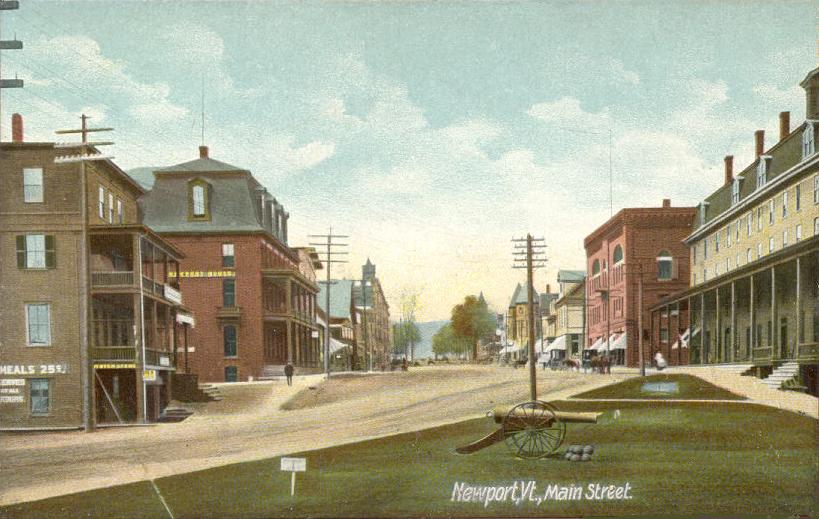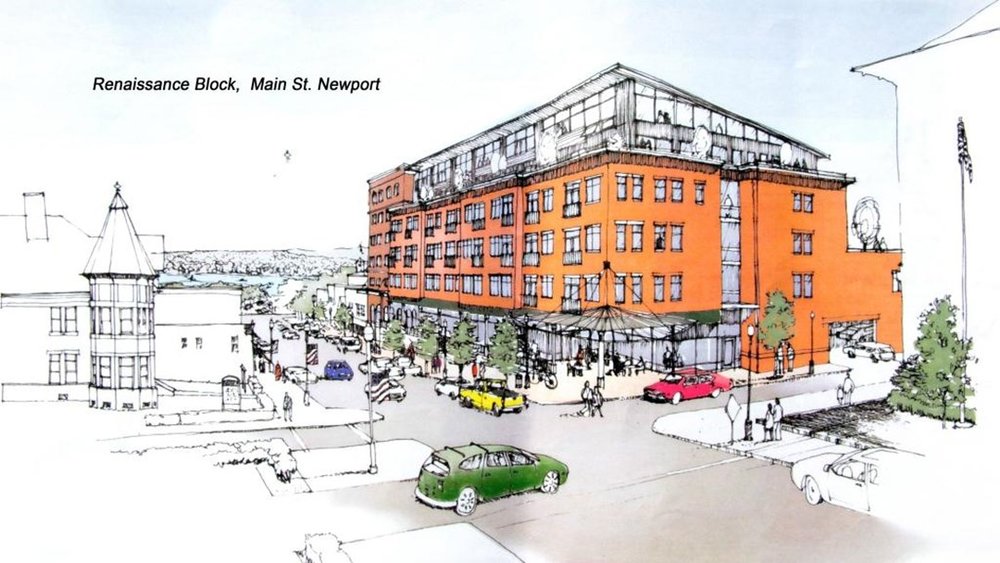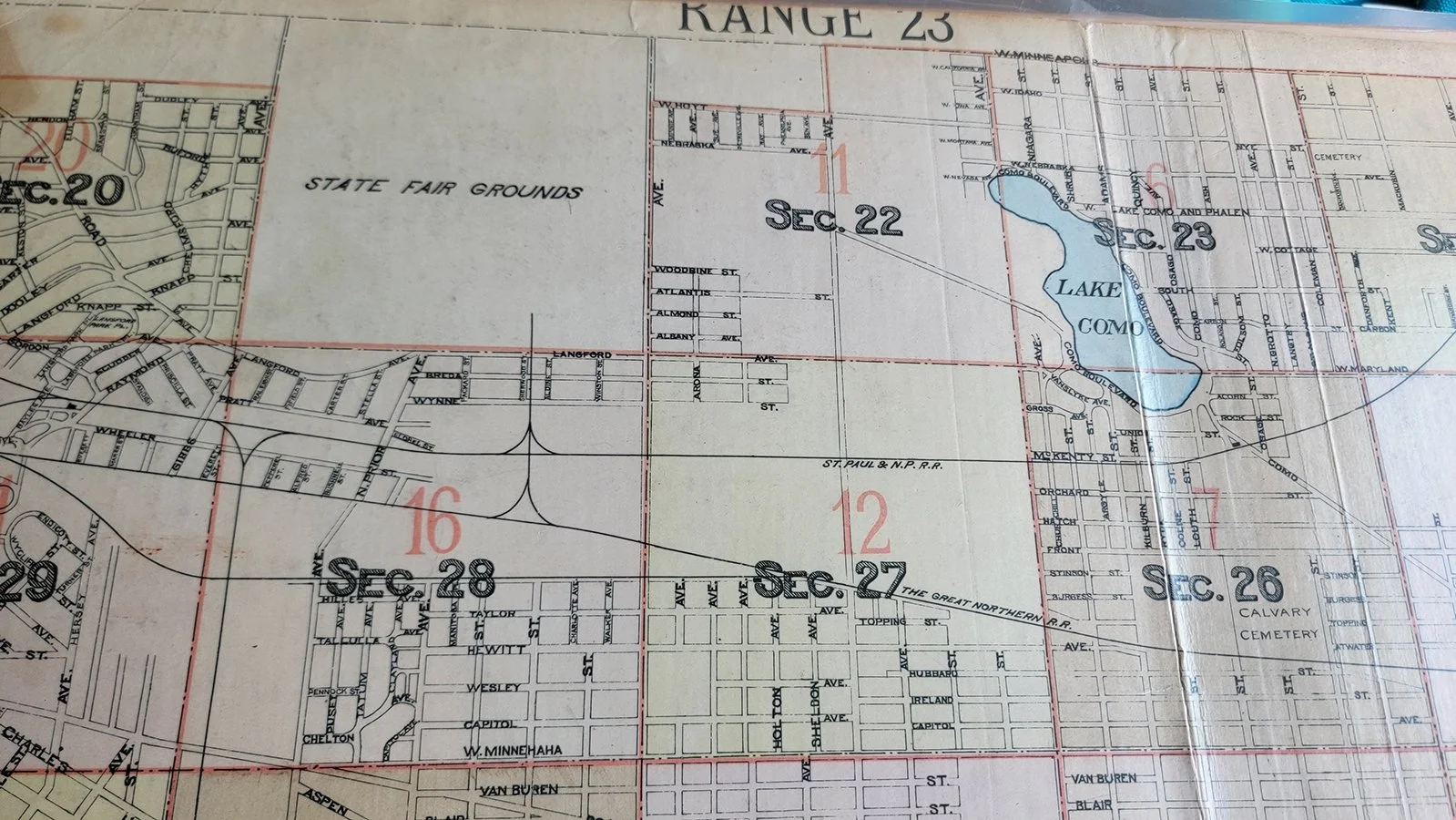A Big, Sad Hole in the Cold Vermont Ground
It was going to be beautiful.
It was going to jump-start a struggling economy. This would put Newport on the map. It was a silver bullet.


It was a cold February morning in 2013 and I was headed to Vermont. When an opportunity for an all-expenses paid trip to New England arose, I immediately jumped on it. Strong Towns was kind enough to send me to help with a community engagement project with some amazing partner organizations. I couldn't pass it up.
Our objectives were simple: engage the community, present the Strong Towns message, and cross our fingers the community would make the right decision. Big plans were brewing, and we wanted to be part of it.
The town of Newport, Vermont, is settled amidst the forests and farms of the northern Vermont countryside, not far from the Canadian border. It's a stunning town of 4,600 people nestled on the beautiful shores of Lake Memphremagog. It is the economic and cultural capital of a region known as the Northeast Kingdom.
The big, new, exciting, silver bullet renaissance plan was going to take many forms: demolish blocks of historic buildings and replace them with new mixed-use buildings, a new conference center, marina, and, of course, attract a bio-tech research firm from South Korea. It was a big gamble with a huge upside. It would create over 10,000 direct and indirect jobs! Plus, a Walmart would be coming to town and they needed a strong downtown to combat it.
Tourism would boom, jobs would be had, and the town would be forever changed. And it would all be funded through an obscure Federal program called EB-5. Or, as locals referred to it: free money.
This was the dream, but reality had something else in mind.
I didn't know much about the EB-5 program or what it meant. Money was money, regardless of the source. Free money, all the better. I assumed everything was above board. This was Vermont after all, not New Jersey.
All I cared about was that a town was going to tear down its historic Main Street. This struck me as an irresponsible thing to do. Residents and civic boosters insisted Main Street was unsatisfactory, unsafe, and unusable. It looked fine to me. In fact, in the small Midwestern town of my childhood, this block would have been the town's pride and joy.
Hindsight is always 20/20, but I do vaguely remember conversations about whether the historic core should be redone. The proposed replacement had a healthy mix of uses, good architecture, and respected the surrounding urban form. What's not to like? It was responsible urban development.
A quick background; the EB-5 program is a federally-sponsored investment scheme designed to allow wealthy foreign citizens to invest $500,000 in projects in distressed areas in return for Green Cards. In other words, buying citizenship. The whole thing felt un-American, and still does: Give me your tired, your poor, your huddled masses yearning to breathe free…and half a million dollars, plus a $50,000 administrative fee.
It was too good to be true. The financing of Newport's rebirth was a classic Ponzi Scheme. A well-known local ski-resort owner/civic-booster unwisely partnered with a banker from south Florida, who is now being accused of embezzling $50 million for personal uses. And, the fate of the Korean bio-tech firm? According to the Securities and Exchange Commission, it was "nearly a complete fraud."
EB-5's financial fraud was—very unfortunately—discovered after the town had torn down its historic downtown in 2014. It wasn't pretty. The antithesis of local, incremental growth had backfired in the worst possible way. And, after a year of sitting empty, local residents were quoted by the New York Times as saying, "We call it Little Beiruit. It looks like it was bombed."
I was saddened to hear of Newport's fate. History demolished, small businesses destroyed, a tax-base diminished, and an embarrassing black-eye for a small town in Vermont that bit off more than it could chew. The giant hole in the ground akin to the infamous Kelo vs. New London, and a not-so-subtle reminder to not put all your eggs in one basket.
Strong Towns was brought in to help provide the community with some visioning prior to Main Street's demise. Maybe I had one too many glasses of red wine the night prior and didn't sell the message as well as I could? That, or the political inertia of these projects is simply too difficult to halt. Is the lure of free money too great?
Consulting over a four-day weekend doesn't give one an opportunity to truly experience a community. I can't say I know Newport well, but I know it well enough to say it doesn't deserve a hole in the ground. It's a lovely community that made a big mistake, like so many others. This isn't to brag or say, I told you so. Hopefully their story can help others be more mindful of the silver-bullet project. There is another way.
A Strong Town practices incremental development. This approach prevents these tragedies from happening. Big developers and mega-projects aren't going to fix our cities. The kind of development that works—the resilient kind of development—happens at a small, local scale by someone who cares about the place they live.
Meanwhile, construction is well underway on a Walmart Supercenter at the edge of town.
Free Online Course
Strong Towns 101
Want to learn how to make your community more economically prosperous and resilient—no matter what lies ahead?
This short, four-part course gives you to tools you need to get started in clear, understandable language, with practical action steps.
Course members will learn about:
The insolvency crisis facing America's cities and towns.
How this happened (and why it's not your fault).
How to approach these challenges with a Strong Towns framework.







A quirk of Houstonian zoning has enabled some residents to start thickening up their neighborhoods, albeit through technically illegal means.